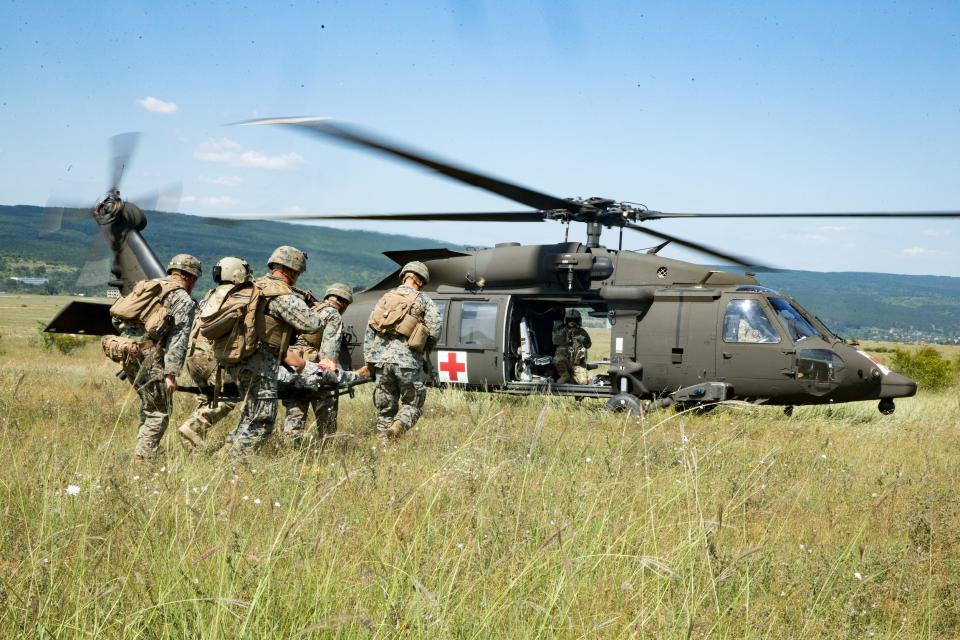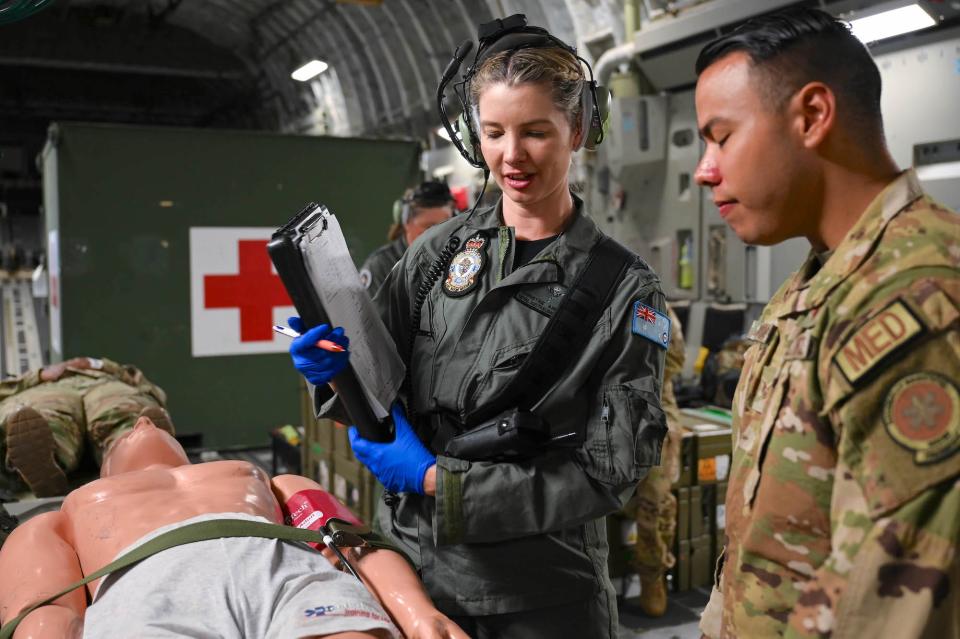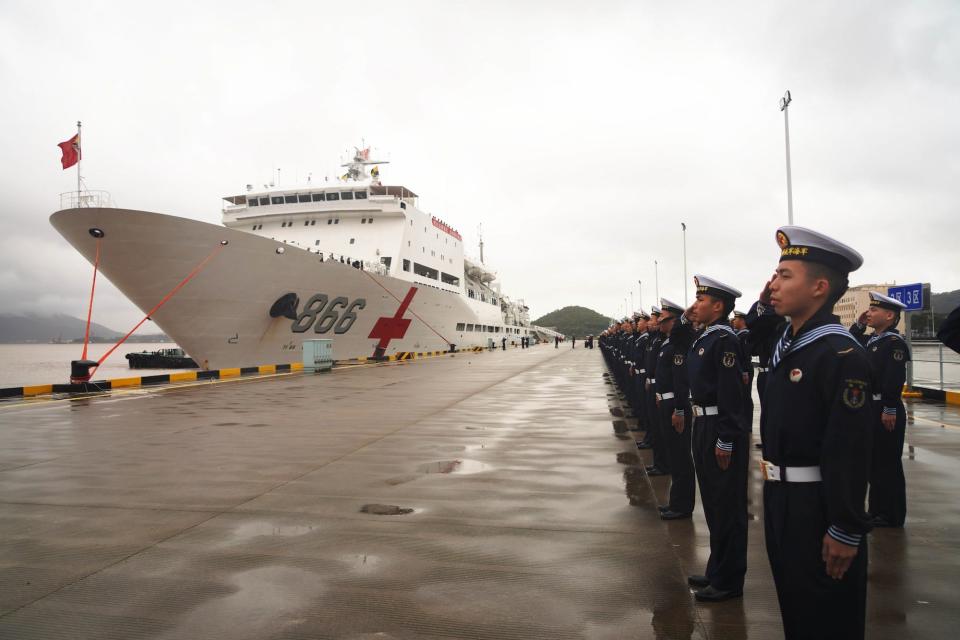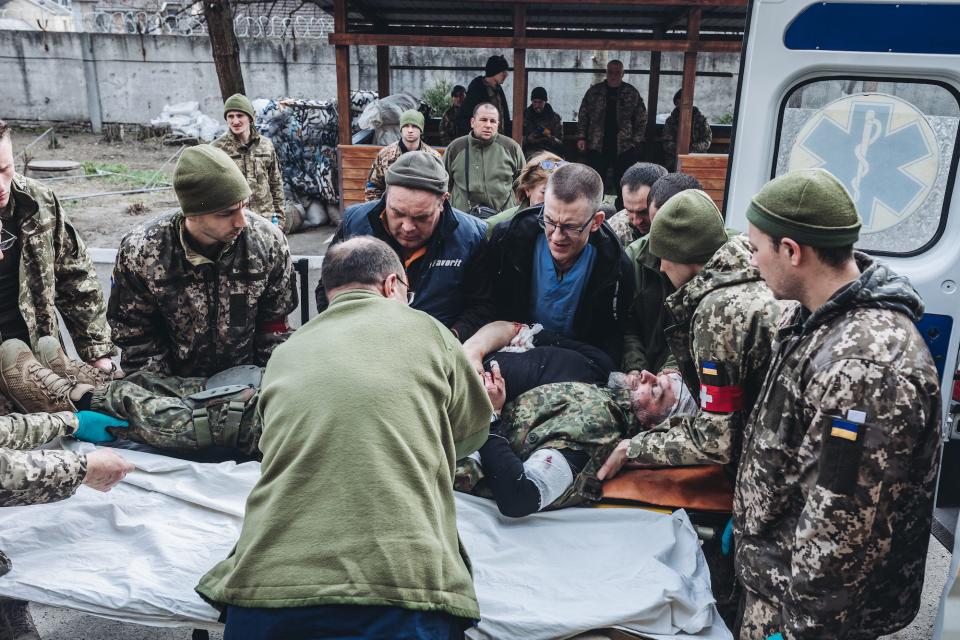Amid fierce, bloody fighting in Ukraine, the US and China are training for new ways to get wounded troops away from the frontline
Intense fighting and high casualties in Ukraine have raised new challenges for military medicine.
This summer, the US and Chinese militaries both trained on new ways to evacuate wounded troops.
In a long-range war in the Pacific, medevac operations will be more difficult to conduct.
For most of American military history, medical evacuation meant a long, painful ride in a horse-drawn wagon or a rudimentary vehicle. Since the Korean War, US soldiers have become accustomed to rapid "medevac" by purpose-built medical vehicles, ships, or aircraft.
But recent US wars have been against opponents with vastly inferior firepower and technology. The hardware being used in Ukraine, and the estimated 500,000 casualties both sides have suffered there in just 18 months, raises a disturbing question: How well will medevac function on a battlefield with advanced jet fighters, air defenses, and long-range missiles?
The US and China are grappling with this question in the context of a Pacific war, where vast distances will complicate evacuation and the "golden hour" — the important period after an injury when even basic treatment can make the difference between life and death.

US and Chinese troops both recently completed exercises to test their capacity to treat casualties rapidly under those circumstances.
In July, airlift and aerial-refueling units from the US Air Force and six other militaries experimented with new procedures during Mobility Guardian 23, which took place in the Pacific for the first time in the exercise's history.
In a war with China, the US military medical units would have traverse thousands of miles of ocean while ensuring their supplies were properly stored, and do it all without access to as many full-service health facilities, US airmen told Air Force Times.
For example, it may take too long for overtaxed aeromedical units to respond to a medevac request in a distant location. During the exercise, US airmen and their partners tried a more decentralized approach in which small but well-equipped medical teams were attached to airlift squadrons to provide on-the-spot care.
The teams could initially evacuate and treat casualties aboard smaller C-130 transports capable of landing on short or underdeveloped runways, a useful attribute given that China will likely attack the US's main air bases with long-range missiles. The wounded would then be transferred to larger C-17s for transport to major medical facilities.

As Mobility Guardian was underway, China's military completed its first exercise to address a similar challenge: how to use helicopters to evacuate casualties from distant islands — an especially pertinent issue for Beijing, given its outposts on islands in the South China Sea and its designs on other nearby islands.
"In military operations on remote islands, medical aid conditions are usually restricted, and medical evacuation through ocean-going vessels could be slow and cost lives," said Global Times, a tabloid run by the Chinese Communist Party.
The exercise included a coastal defense brigade, an army aviation brigade, and a naval hospital to simulate medevac from a "frontier island" under attack. It took place on islands off Zhejiang Province, which happens to be relatively close to Taiwan.
"After locating the wounded through drone reconnaissance, the team approached the position and carried out triage and first aid, before calling in a transport helicopter to transfer two wounded personnel who were in critical condition," Global Times said. "Escorted by an attack helicopter, the transport helicopter soon arrived and secured the wounded."
Using helicopters to evacuate wounded personnel from an island would be routine for a Western navy or coast guard, but Chinese officials hailed it as a major feat. "This is the first time mobile air forces were introduced in a medical exercise," said Su Xingliang, head of the coastal defense brigade's support department.

Whatever medevac procedures are developed, the fighting in Ukraine suggests major battles with advanced weapons — or even large quantities of older weapons — will tax militaries' medical capacity.
"Air, ground, and sea-based medical evacuation will be practically impossible due to very long range and accurate fire capabilities" of near-peer adversaries, a group of authors warned a recent article on medical lessons from Ukraine, using a term for militaries with capabilities similar to that of the US.
"Future US service members who are injured in combat may consequently not reach definitive care until days later, and medical personnel providing care will definitely be in harm's way," the authors wrote in the Journal of the American College of Surgeons.
Compared to wounds from improvised explosive devices in Iraq and Afghanistan, a war with a well-equipped enemy such as Russia and China would result in far more horrific injuries.
"Statistics shared by Ukrainian physicians demonstrate that more than 70 percent of all Ukrainian combat casualties are due to artillery and rocket barrages from Russian forces, which has resulted in significant polytrauma to multiple organ systems," the article noted.

Artillery attacks affect a wider area than IEDs, generating more patients, and are more likely to inflict severe chest and brain injuries, meaning each patient will need more medical resources. At the same time, even tasks such as using power generators to cool blood — which could alert adversaries to the presence of a medical facility — becomes riskier.
Interestingly, the study found that "current US military body armor will likely be insufficient against [near-peer adversary] arsenals with ballistic components that can hit laterally, above, or below standard issue armor plates from multiple angles due to the larger number of accurately impacting munitions."
The ability of near-peer adversaries to strike with conventional weapons and electronic warfare will impair efforts to move wounded troops, meaning forward medical facilities will need to be able to provide longer-term and more complex care and to defend themselves from artillery or missile attacks.
More distant medevac and medical facilities will still be challenged by enemy missiles able to strike with precision hundreds of miles in the rear.
"The resources needed to adequately provide life-saving care will be far greater than what the US has allocated for in the past," the report concludes.
Michael Peck is a defense writer whose work has appeared in Forbes, Defense News, Foreign Policy magazine, and other publications. He holds a master's in political science. Follow him on Twitter and ;LinkedIn.
Read the original article on Business Insider

